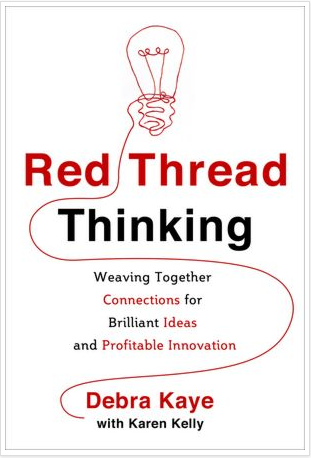 Humans are wired for stories – we tell them, love to hear and read them, and look for them in the chaos of the world to feel a sense of order. We communicate these stories by drawing pictures with language and most directly, with images themselves – from cave paintings to family photos, scribbles, scrapbooks, videos, to Pinterest boards – communicating through pictograms is a cultural habit that is near universal.
Humans are wired for stories – we tell them, love to hear and read them, and look for them in the chaos of the world to feel a sense of order. We communicate these stories by drawing pictures with language and most directly, with images themselves – from cave paintings to family photos, scribbles, scrapbooks, videos, to Pinterest boards – communicating through pictograms is a cultural habit that is near universal.
Images are symbolic of our lives and our culture. Anytime we as marketers can use them we convey so much more than we could have had we depended solely on words. Pictures also help businesses engage customers because an image is an oasis, a moment of relief from the bombardment of all the “noise” in the marketplace. Using icons in your product packaging and sales materials is a secret weapon.
Visual communication has become a habitual way people share information. No surprise that Instagram, Pinterest, and Snapchat have gained fast adapters – they are so easy and simple to use, and help users communicate so much emotion and meaning – and stories – without words.
Icons have always been powerful signifiers because they are immediately recognizable and understood, while also expressing complex cultural codes in compact form. Think about the smiley face or the heart symbol: these icons now sometimes considered corny and hackneyed, but only because they are so easily understood that they became overused and eventually, cliché. That doesn’t stop adolescents and adults alike from adorning handwritten messages with circles adorned with two dots and a smile.
We still use the heart symbol instead of the word “love” to indicate our passion for an object, person, or event. It started in the 1970s, when New York City’s fiscal health was in deep decline and crime, including murder rates, was higher than ever, people were afraid to come to the city. Milton Glaser was hired to come up with a campaign to encourage tourism. He dug down away from language, harkening back to our most innocent emotion and to the already familiar heart icon:![]() . The campaign was such a huge hit because it was absorbed emotionally rather than literally; it’s meaning was instantaneous.
. The campaign was such a huge hit because it was absorbed emotionally rather than literally; it’s meaning was instantaneous.
Unfortunately, the vast majority of businesses are not using pictures or iconography in their communication, whether on Twitter or Facebook or websites, mailings and packaging. Why not? It is easier to communicate more ideas through an image on Twitter than it is using its 140-word format. Plus, with a picture you are more likely to create an emotional connection with the viewer. They are more prone to stop and look at an arresting or interesting image than they are to slow down and read more text.
The more immediately someone understands a product or a message, the more chance you have of selling him or her on it. Everyone recognizes the white ear buds without a word ever being said. Visual perception occupies by far the largest area of the human brain, at 80% followed by hearing at 10%, making sight the most influential of the senses. Add this to the fact that people spend as little as three seconds at the retail shelf; they do not even see text much less read or understand it. The time spent attending to a digital ad is even less. So why not use more visual imagery for modernity, fun, and memorable communication?
If you think of your business in terms of pictures at the outset it may well be a way to find points-of-difference that will carry through in everything you do. We should be on a mission to convert as many words to icons and images on our products, packaging, and all marketing efforts. You might even think about more dynamic employee communiqués. Every company or brand should have its own unique and immediately identifiable universal symbolic language. Remember too, that visual language gives you more opportunities to sell across cultures – for there are fewer language barriers to break. Proof of this is in the international symbols for men’s and women’s restrooms (simple silhouettes in either pants or a dress), restaurants (knife and fork), and the baggage claim (suitcase) in airports. Simple yes – and very powerful.



Pingback: Visual Marketing and Personal Branding Success | Personal Branding Blog - Dan Schawbel
Pingback: Measure Your Content Curation Success: A 10 Question Scorecard
Pingback: Meça o sucesso da sua gestão de conteúdo: uma tabela de 10 perguntas | hytrade
Pingback: People Think in Pictures – So Should Your Business – Ebook Promotion and Marketing | jack & Liz